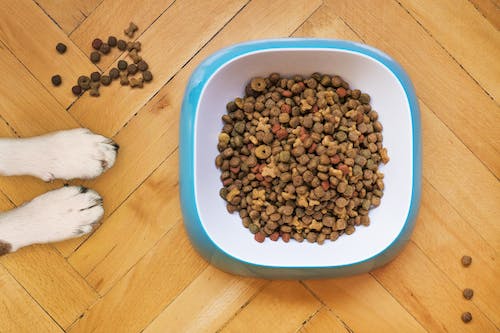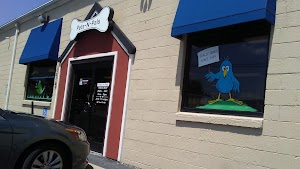Archive for November, 2022
-
What Dog Food Ingredients Should You Avoid?
You are what you eat. And that expression applies to our fur-legged friends too. Some dog food brands skimp out on the actual healthy ingredients (chicken, beef, etc.) and replace these proteins with fillers. Fillers do not add much nutritional value to what they are eating and, overall are not recommended. Current research is bringing to light that many of these unhealthy ingredients can trigger allergies in your dog as well.
What Ingredients Should You Avoid?
Butylated Hydroxyanisole, also known as BHA, is a chemical preservative found in many dog foods and treats. It is used to preserve fats and oils. The CDC lists this ingredient as a known carcinogen that has negative effects on the liver and kidneys of animals. Some countries actually banned this substance due to this. Although the effects might not be noticeable in small quantities, over a long period of time, feeding your dog food that has BHA in it can contribute to health issues.

White Flour
White flour is usually used as a filler and binding agent in dog food. It is a bleached flour that contains little to no nutritional value. White flour has even proven to cause spikes in blood sugar. This means it may make your dog feel full, but not for a sustained period.
Unspecified Meat or “Meat Meal” With “unspecified” meat in your dog’s food, what it is can be a mystery and risky. These meat meals are usually low quality, leftover meats with minimal regulation and or control of quality. Although these products are in many dog foods, try to avoid them. At the very least, pick a dog food where the specific type of meat is listed.
Artificial Colors and Flavorings
Artificial coloring and flavors are added to dog foods to create a more appealing appearance and smell. They are usually listed specifically, and the most commonly found dyes in dog foods are Red 40, Blue 2, and Yellow 5 and 6. These artificial ingredients are simply unnecessary and have been linked to hyperactivity, hypersensitivity, and allergic reactions to foods.
MSG
MSG, or monosodium glutamate, is not usually listed on pet food ingredient lists. It is more often found in autolyzed yeast, hydrolyzed protein, calcium caseinate, protein isolate, texturized protein, natural flavors, hydrolyzed yeast, yeast extracts, soy extracts or concentrate, sodium caseinate, monopotassium glutamate, glutamate or glutamic acid, or disodium inosinate or guanylate. These ingredients are used to enhance the flavor of dog food but are not necessary.
Corn Syrup
Corn syrup is a concentrated sweetener that is derived from corn. It is inexpensive to produce and is often added to processed dog foods to add flavor without costing a lot of money. Corn syrup, like white flour, causes your dog’s blood sugar to spike, which is not healthy and known to cause health issues down the road.
Farmed Salmon
Farmed salmon refers to salmon that is grown inland in artificial habitats. These are not fish in the actual ocean, have never seen or been in the ocean, and are grown specifically to be harvested for food. If they are found in your dog’s food, they will be simply listed as salmon, salmon meal, or salmon oil. If the salmon in your dog’s food is wild-caught, it will be listed as so. Farmed salmon is not nearly as nutritious as wild-caught salmon.
Nitrates
Nitrates, more specifically sodium nitrite, is a common preservative found in dog foods. It is used to preserve meat products. This preservative, although currently deemed safe to be used in dog food, has been linked to a blood disorder called methemoglobin as well as cancer.
STPP
STPP, or sodium tripolyphosphate, is a common ingredient in laundry detergent that softens the water. In dog food, it is used as a preservative. Since it is an actual chemical that does not contain any nutritional value, it is best to avoid it in your dog’s food. Taking the time to shop for quality dog food will yield a better long-term health outlook for your dog. Just because an ingredient is approved for use in dog food does not always mean you should use it. Natural ingredients are always recommended and should be looked for.
-
Puppy Accidents and How to Clean Them
Accidents happen… All puppies, from time to time, don’t make it outside before they do their business. If your puppy, like most, has an accident indoors, don’t overstress. It is important, though, to realize that indoor puppy accidents can cause your carpet and furniture to smell or even be destroyed. The key is to cleanse the area as soon as possible. This is important for two reasons. The first is because the waste left on the carpet or furniture can absorb into the fibers which makes removing the odor very difficult. The second is because once these odors remain, regardless of how slight, your four-legged friend may return to the same area and relieve himself there again.

How to Prevent Indoor Accidents
Being consistent with your puppy’s potty-training routine is key. Also, providing your puppy with ample outdoor potty time is essential. For those who work all day, considering a daytime pet sitter to stop over and allow your puppy a potty break also will help the issue. Using positive reinforcement is always more effective than using discipline in this process.
How to Get Urine Odors Out of a Carpet
Dog urine gets absorbed into the carpet as an acid that causes damage to the carpet’s fibers. Upon the urine drying up, it results in an alkaline residue. If urine salts are not cleaned with a professional pet cleaning product, this may result in a foul urine smell building up over time. Absorbing the wet urine with a dry rag, followed by washing the infected area, will help to remove the urine and smell. At times, this process may need to be completed two or more times.
How to Get the Urine Smell Out of a Couch?
If your pup had an accident on your couch, professional cleaning products should be used to cleanse the area. After the couch is cleansed, keep your puppy away from it until the area is complete and the odor is completely gone. Dogs tend to remark the same spot over and over and detect this area by smelling where they previously went.
At Home Cleaning Products
Did you know that you can naturally clean pet stains and odors using commonly found items in your pantry? Ingredients such as baking soda, vinegar, hydrogen peroxide, vodka, orange, lemon, and salt to clean pet urine work well. You can neutralize and clean surfaces by using a combination of these products. The issue with using a synthetic cleaner on a carpet is that it can damage and remove its color and add unnecessary toxic chemicals to your home. By utilizing more natural ingredients, especially things like enzymatic cleaners with essential oils, pet owners can keep their homes safe from the buildup of harmful fumes and chemicals that can make their pets sick.
Before Using Any Cleaning Product
Before applying any cleaning solution, you should always test it on a small area of your rug or furniture to ensure it won’t do any damage. Once the ingredients demonstrate that they are working and not causing damage, be sure to cleanse the area with a copious amount of the product and thoroughly scrub the infected area. Dog urine can be very difficult to clean fully and, if not removed, can cause more issues down the road. Regardless of what products you use, all puppy owners need to remember that their puppies are still learning and want to make you happy. Being patient, using positive reinforcement, and taking the time to train your four-legged friend right will yield positive long-term results.




